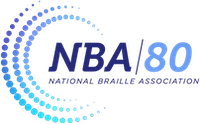Thank you for your question!
Our TG experts are unified in support of transcriber-added labels or notes when they add clarity. In fact, GSTG 5.3.6 reads "When there is no heading to the print illustration, it is permissible to add a heading in braille for clarity. It is necessary to add transcriber's note indicators to this heading."
There are several different considerations for labels and headings in TGs. In the following paragraphs, we describe those differences and provide advice on how they are handled.
If the contents of your transcriber-addition will be applicable to multiple TGs in a document, it will be appropriate to add it on the Transcriber's Notes page in the front matter or before a series of graphs. The note could be something as simple as:
"In Cartesian graphs, quadrants are identified as follows: Upper right (Quadrant I); Upper left (Quadrant II); Lower left (Quadrant III); Lower right (Quadrant IV)."
If transcriber-added word labels or keys are added to a diagram itself, they are not enclosed in transcriber's note indicators. A note stating this should be added to the Transcriber's Notes page (GSTG 3.1.4).
If the transcriber-assigned words are headings (outside of the diagram) instead of labels or keys (inside the diagram), it is necessary to add transcriber's note indicators to the added heading (GSTG 5.3.6).
We also want to note GSTG 7.3.7 because it seems especially relevant in your case. GSTG 7.3.7 reads as follows:
"Retain features that could be used as a point of reference even though they may not be labeled in print. Transcriber assigned labels should not be enclosed in transcriber note indicators."
The four quadrants in a full Cartesian graph would qualify as "features" mentioned in GSTG 7.3.7, and so labels for the four quadrants can be added if they would aid the reader. No transcriber's note indicators are used when we add labels.
We hope this helps!
